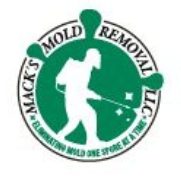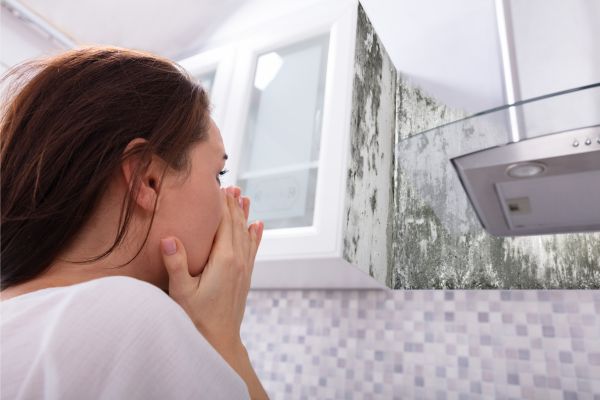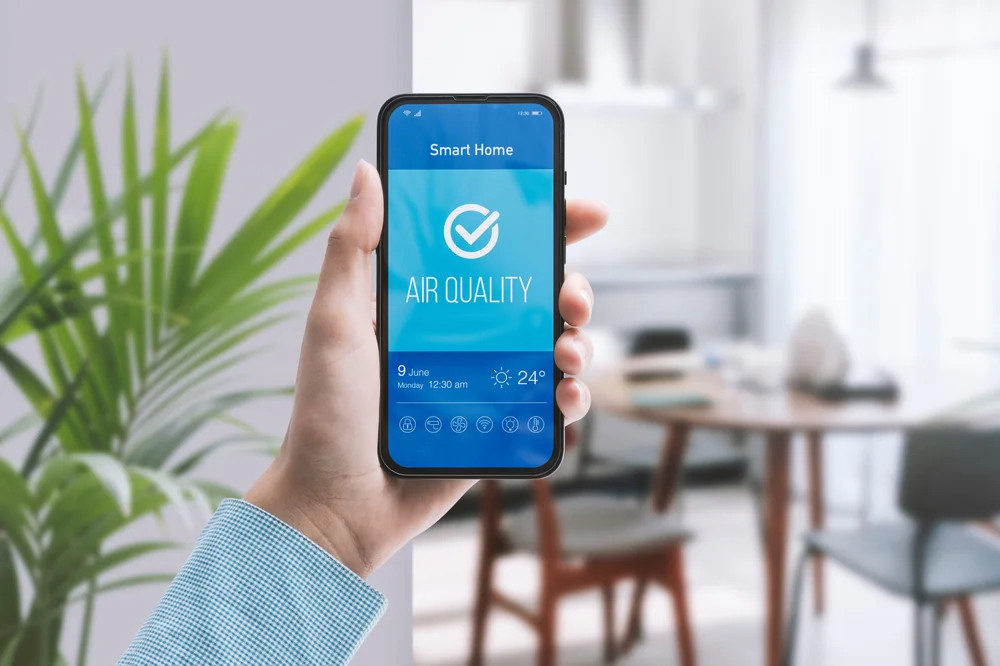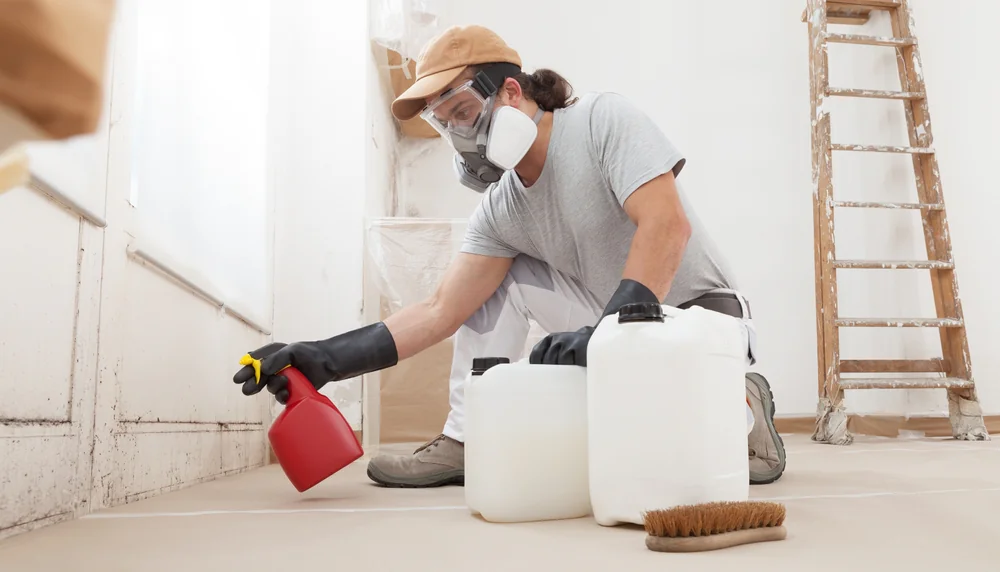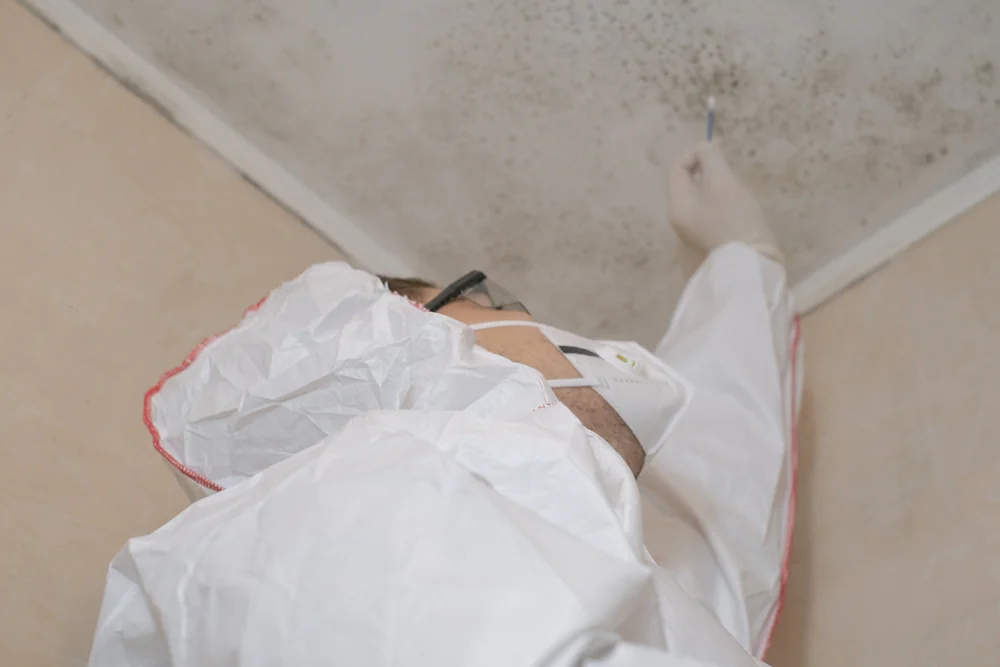Summary:
How to Identify Mold in Your Home
Mold doesn’t always announce itself with obvious black patches on your walls. Often, the first sign is that distinctive musty odor that seems to linger no matter how much you clean.
You can usually see or smell a mold problem. Mold can appear as slightly fuzzy, discolored, or slimy patches that increase in size as they grow. But here’s what many homeowners don’t realize: most molds produce musty odors that are the first indication of a problem.
The tricky part? Mold can be black, green, gray, white, or brown. Mold can even appear orange, pink, or purple when it grows behind vinyl wallpaper. This variety in appearance means you can’t rely on color alone to identify a mold problem.
Common Signs of Hidden Mold Behind Walls
Some of the most dangerous mold problems are the ones you can’t see. You may suspect hidden mold if a building smells moldy, but you cannot see the source. Mold may be hidden in places such as the back side of dry wall, wallpaper, or paneling, the top side of ceiling tiles, the underside of carpets and pads.
Here’s what to watch for: discoloration of walls, even if it has been painted over. If the water damage inside the walls persists, mold will show signs on the surface. You might notice paint that’s bubbling or peeling, especially in areas that have experienced water damage.
If safe to do so, press on the areas where you suspect there’s water damage. If the wall sinks inward or becomes depressed in some way, you likely have water damage on the inside, even if the exterior appears normal. This softened drywall is often a telltale sign that moisture—and potentially mold—has taken hold.
Water stains are another red flag. If you can see visible water stains on gypsum board walls or ceilings, when there’s been a single leak or other type of water damage, there will usually be one line that forms around a “pool” of water. If it was a recurring event, such as an intermittent plumbing leak or roof leak, you will often observe ‘tide lines’ that appear like concentric rings.
Don’t ignore areas around your HVAC system either. The air vents in the ceiling or floors may have rust or black spots, indicative of high moisture in the air system, which usually causes mold growth.
Health Symptoms That Could Indicate Mold Exposure
Your body often knows there’s a mold problem before your eyes do. Lingering musty smells, worsening allergy symptoms, constant fatigue, or sinus irritation that improves when you leave home could all signal mold.
Inhaling or touching mold or mold spores may cause allergic reactions in sensitive individuals. Allergic responses include hay fever-type symptoms, such as sneezing, runny nose, red eyes, and skin rash. But the symptoms can go beyond typical allergy reactions.
Other signs of a major mold problem are allergic reactions and certain health symptoms. For instance, scratchy and watery eyes can be a telltale sign that a mold problem is present somewhere in your house. More health-related signs of mold include a runny nose, sneezing, dizziness, and in some cases, even memory loss is a possible outcome.
Pay special attention if people who suffer from asthma may experience their symptoms worsening in a moldy environment. This is particularly concerning because the risk of asthma doubles in homes with mold.
Even your pets can be affected. Pets may exhibit stomach issues like vomiting or decreased appetite and may experience symptoms like coughing, scratching, skin irritation, and lethargy. Remember that due to the size difference, even small amounts of mold can affect pets.
The key thing to remember: if your seasonal allergy never goes away and worsens when you’re home, you might be experiencing mold allergy symptoms due to hidden mold.
Want live answers?
Connect with a Mack's Mold Removal expert for fast, friendly support.
When Water Damage Leads to Mold Problems
Understanding the connection between water damage and mold is crucial for every homeowner. After water damage, mold will begin to grow within 24 hours. That’s why quick action is so important.
When water leaks or spills occur indoors – act quickly. If wet or damp materials or areas are dried 24-48 hours after a leak or spill happens, in most cases mold will not grow. This 24-48 hour window is your best opportunity to prevent a mold problem from developing.
The challenge is that water damage isn’t always obvious, especially when it happens inside walls or in other hidden areas.
Types of Water Damage That Cause Mold
Not all water damage is created equal, and understanding the different types can help you assess your mold risk. Clean water is uncontaminated and typically comes from a sink, toilet, or water line. Grey water often comes from dishwashers, laundry machines, and other appliances and has other substances in it that could be harmful if ingested. Blackwater is the most contaminated water damage category and usually comes from a sewer backup or stagnant water.
Here in Bucks County, we see mold problems from various sources. Pennsylvania’s wet climates and constant humidity greatly contribute to this outbreak. Black mold often appears inside walls that hide leaky indoor plumbing that has gone undetected for weeks or months.
Common causes include leaking pipes, roof leaks, basement flooding, and even high humidity levels. Mold spores are always present in the air, but they only grow when they find the right conditions, such as moisture from water leaks, condensation, or flooding.
The process of mold development after water damage follows a predictable pattern. First, the moisture creates the perfect environment. Mold growth occurs when microscopic mold spores land on damp or wet surfaces and begin to multiply. Mold thrives in areas with high humidity, moisture, and limited ventilation, such as basements, bathrooms, and attics.
What makes this particularly challenging is that other water problems, like leaking pipes, may also trap moisture inside your walls. Even when leaks are visible, moisture can get inside walls, providing mold a place to grow.
The Hidden Dangers of DIY Mold Removal
When you discover mold in your home, your first instinct might be to grab some bleach and start scrubbing. But DIY mold removal can actually make your problem much worse—and put your health at serious risk.
To fully appreciate this danger, you have to understand how mold spreads. Mold produces spores. When these become airborne—such as with improper DIY home mold removal —these spores can spread to other areas of your home. Mold spores spread very fast and easily through the air. When you attempt to remove mold yourself, you can disturb the mold causing it to move to other areas of the house.
The health risks are significant. It’s easy to believe that just a mask and gloves will give you all the protection you need. But molds often create allergic reactions, and they can also cause additional health problems. Mold spores can irritate the lungs, leading to coughing, wheezing, and even asthma attacks. Without proper protective gear, you risk inhaling these spores during DIY removal.
Professional equipment makes a crucial difference. We utilize equipment including sophisticated air filtration systems that create negative air pressure. This keeps contaminants outside your home and prevents them from coming inside, ensuring the health and safety of all involved.
Perhaps most importantly, are you sure you got all the mold? If you overlook even a tiny bit, the spores can continue to release contaminants into the air, affecting your health. Often, it’s not the mold you can see that causes the problem. It’s the mold that you can’t see. Mold can fester in wood and in crawlspaces, particularly if your home has been damaged as a result of flooding. This also means that the mold may cover a much larger area than that which is visible to you.
The EPA provides clear guidance: if the moldy area is less than about 10 square feet, in most cases, you can handle the job yourself, but if there has been a lot of water damage, and/or mold growth covers more than 10 square feet, consult professional remediation services.
Making the Right Choice for Your Bucks County Home
Identifying mold in your home is just the first step. The real question is what to do next—and that decision can make the difference between solving your problem and making it worse.
Dealing with mold concerns is often a foreign problem and homeowners sometimes just don’t quite know where to begin. Unaddressed mold and the underlying moisture problem often worsen with time. If you suspect a potential mold problem in your Eastern PA property, it is important to consult a professional in a timely manner.
Remember, successful mold remediation isn’t just about removing what you can see—it’s about addressing the underlying moisture problem and ensuring the mold doesn’t return. When you’re dealing with your family’s health and your home’s value, it makes sense to work with professionals who have the training, equipment, and experience to get it right the first time.
If you’re seeing signs of mold in your Bucks County home, don’t wait for the problem to get worse. Contact us for a professional assessment and peace of mind.
